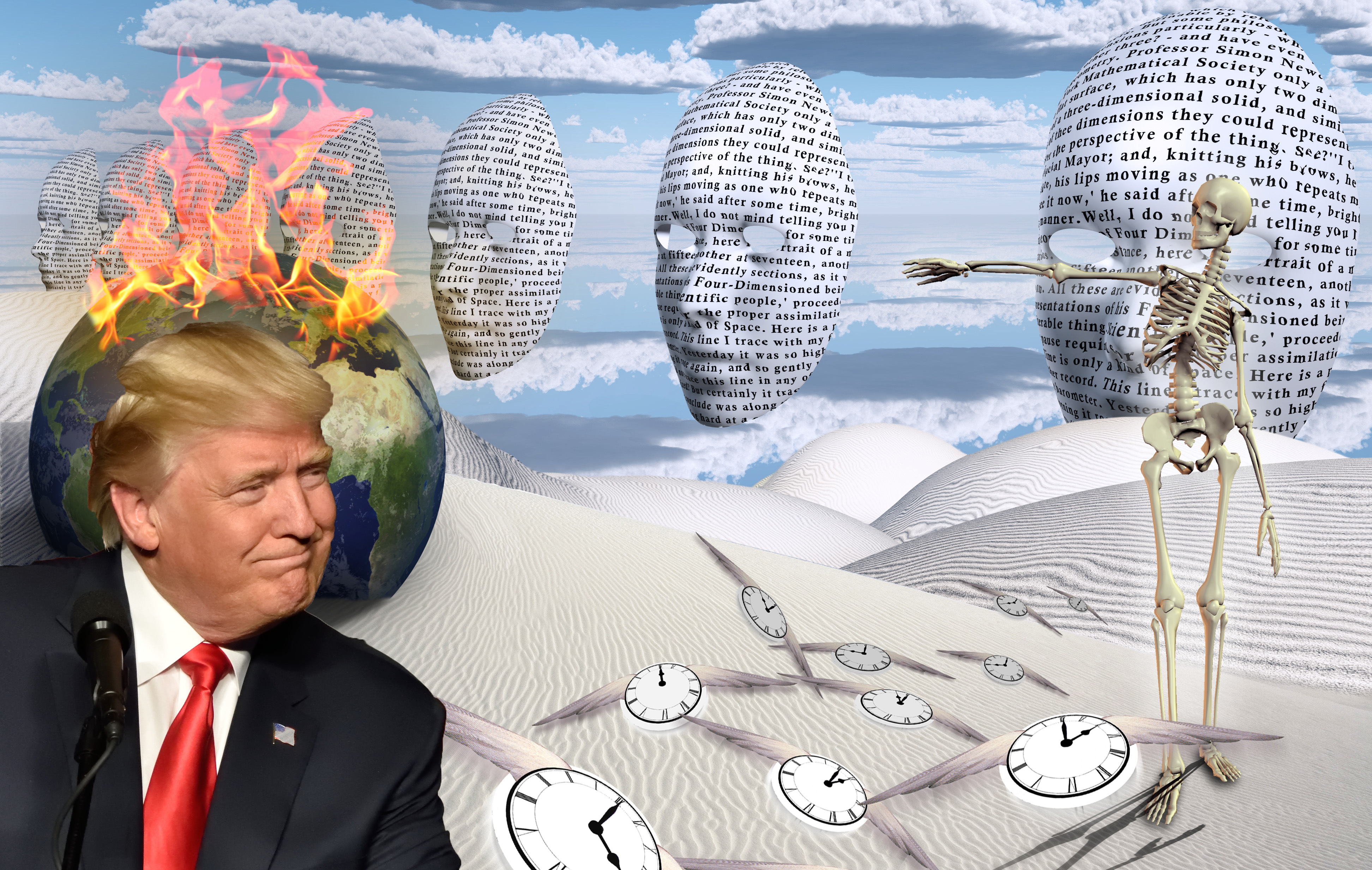We Asked a Doomsday Clock Scientist About Trump’s ‘Fire and Fury’ Threat

Credit to Author: Matthew Gault| Date: Thu, 10 Aug 2017 20:57:55 +0000
President Donald Trump shocked the world this week when he told reporters he’d meet North Korean threats with outright aggression. “North Korea best not make any more threats to the United States,” Trump said. “They will be met with fire and the fury like the world has never seen.”
Reporters followed up with Trump two days later and he doubled down. “Maybe that statement wasn’t tough enough,” he said.
The statement set off alarm bells in the nuclear weapon watchdog community. “FWIW, Trump is a blowhard who blusters when unsure what to say. It’s *probably* a good sign that he’s frightened and unsure what to do,” tweeted Jeffrey Lewis, Director of the East Asia Nonproliferation Program at the Middlebury Institute of International Studies and founder of Arms Control Wonk. “That or we’re all going to die in a nuclear hell-fire brought on by two lunatics enabled by toadies sycophants and boot-lickers. We’ll see.”
Lewis isn’t the only scientist worried about Armageddon. The people in charge of the Doomsday Clock, a metaphorical timepiece that keeps track of how close the Earth is to destruction, are just as frightened. But, despite their concerns, there are no current plans to push the hands of that clock closer to doomsday, which is represented by midnight. Not yet.
The clock is run by the Bulletin of the Atomic Scientists, a conglomeration of experts on nuclear policy, climate change, and other global threats. Right now, the clock stands at two-and-a-half minutes to midnight, 30 seconds closer to destruction than it was the previous year. According to the scientists, they pushed the clock ahead half a minute in 2016 in response to Trump’s climate change denials, nuclear proliferation and rising tensions between global superpowers.
Despite the fiery rhetoric of both Trump and DPRK leader Kim Jong-Un, the scientists will not be moving the clock forward, but only because they don’t meet to decide until November. That doesn’t mean they aren’t terrified.
Motherboard reached out to Bulletin of the Atomic Scientists Science and Security Board Co-Chair Robert Rosner to explain the process. We asked him what went through his head when he watched Trump’s statement.
“Dismay,” Rosner replied. “It was in the same spirit as North Korea’s great leader. Very belligerent. When those things were said, was there a game plan in mind of how things would play out? From everything I’ve heard, the answer is no. That’s a scary thing.”
Rosner said that words matter. This was a point the Bulletin hammered home in the statement it released alongside the most recent update to the Doomsday Clock.
“Sometimes things are said, they’re misinterpreted…and then people are moved to action,” Rosner said. Speaking of Kim Jong-Un, he continued, “we’re dealing with an adversary who, we know, is unpredictable and has done things no one expected. He assassinated his [half-brother]. Things that are beyond the pale.”
He also pointed out that South Korea’s capital city is within artillery range of the Demilitarized Zone. Seoul is just 35 miles from from the North Korean border region. “It’s within easy artillery reach,” Rosner explained. “What are we going to do if [Kim] starts bombarding Seoul? What’s our response? Nuclear weapons? Really? So yeah. Words matter.”
Trump and Kim’s words will probably have an effect on the state of the Doomsday Clock this year, but changing the clock isn’t as simple as adjusting its hands and issuing a statement. It’s a process involving experts from across the world. The Bulletin employees dozens of people, but only the 17 members of its Science and Security Board vote on where to set the Doomsday Clock.
The Board will invite journalists, scientists, and other assorted experts to help it craft the agenda of its November meeting, but only the Security Board votes. “We divide into subgroups,” Rosner said. “The subgroups are determined by the expertise of the members of the Science and Security board.” So there’s a subgroup for nuclear power, one for nuclear weapons, one for climate issues, and so on.
As humanity’s array of tools and technologies with which it could conceivably destroy itself has expanded, so to has the expertise of the Science and Security Board. “We have some folks who are schooled…in artificial intelligence. We have folks who are schooled in non-nuclear weapons of mass destruction such as bio-weapons, chem-weapons, etc,” Rosner said.
Once divided, the groups confer and decide where to set the clock. Then everybody gets back together and attempts to form a consensus about where to set the minute and second hand. “The decision of whether or not to move the minute hand and how much to move it is always a consensus decision,” Rosner said. “There may be disagreements. But in the end we do come together.”
The half-a-minute tick forward in 2016 was unprecedented. Never before had the clock moved just half a minute. When asked why, Rosner gave the depressing answer. “We did have a general sense that things are not going well, that things have gotten worse,” he said. “But you have to remember that Mr. Trump had not yet become president. We were loathe to pre-judge the man. We thought it was unwise. Now we know more.”